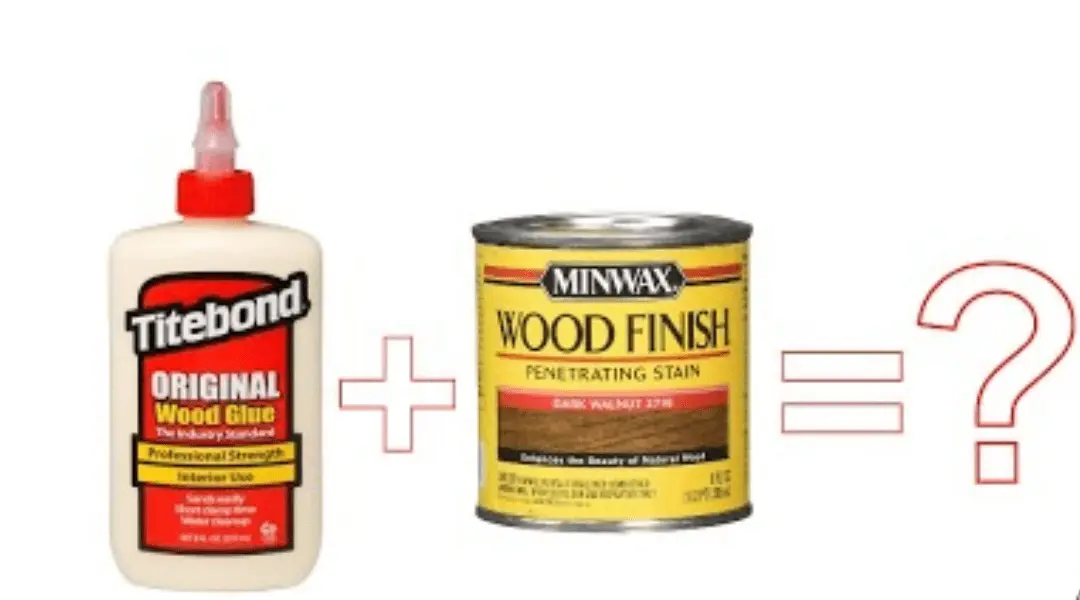Wood glue is a popular adhesive used to bond two pieces of wood together. It is often used in woodworking projects to create a strong and durable bond. However, if you plan on staining the wood after gluing it, you may be wondering if you can stain over the glue. In this blog post, we will explore this topic and provide you with all the information you need to know about staining over wood glue.
Let’s dive into this peculiar topic and uncover the taste, health risks, and even unique uses of glue beyond its intended purpose.
Staining over wood glue can be tricky, and there are several factors you need to consider before attempting it. The type of glue you used, the type of wood you are working with, and the type of stain you want to use are all important factors to consider. This post will provide you with the information you need to make an informed decision about whether or not you can stain over wood glue.
Let’s get started!
Types of Wood Glue
There are several types of wood glue available on the market, and each type has its own unique properties. The most common types of wood glue are:
- PVA (polyvinyl acetate) glue
- Hide glue
- Epoxy glue
- Cyanoacrylate glue
PVA glue is the most popular type of wood glue and is often used in woodworking projects. It is water-soluble and dries clear, making it a popular choice for staining.
Hide glue is an organic glue made from animal hides and is often used in antique restoration.
Epoxy glue is a two-part adhesive that is extremely strong and durable.
Cyanoacrylate glue, also known as super glue, is a fast-drying adhesive that is often used to bond small pieces of wood together.
Can You Stain Over PVA Glue?

PVA glue is the most popular type of wood glue and is often used in woodworking projects. The good news is that you can stain over PVA glue, but there are a few things you need to keep in mind:
Make sure the glue is completely dry before staining. PVA glue dries clear, so it can be difficult to tell if it is completely dry. A good rule of thumb is to wait at least 24 hours before staining.
Use a water-based stain. Oil-based stains may not adhere properly to the PVA glue and may result in a blotchy finish.
Test the stain on a scrap piece of wood before staining your project. This will help you determine if the stain will adhere properly to the PVA glue.
Can You Stain Over Hide Glue?
Hide glue is an organic glue made from animal hides and is often used in antique restoration. The good news is that you can stain over hide glue, but there are a few things you need to keep in mind:
Make sure the glue is completely dry before staining. Hide glue dries clear, so it can be difficult to tell if it is completely dry. A good rule of thumb is to wait at least 24 hours before staining.
Use an oil-based stain. Water-based stains may not adhere properly to the hide glue and may result in a blotchy finish.
Test the stain on a scrap piece of wood before staining your project. This will help you determine if the stain will adhere properly to the hide glue.
Can You Stain Over Epoxy Glue?
Epoxy glue is a two-part adhesive that is extremely strong and durable. The good news is that you can stain over epoxy glue, but there are a few things you need to keep in mind:
Make sure the glue is completely dry before staining. Epoxy glue can take up to 24 hours to dry completely.
Use an oil-based stain. Water-based stains may not adhere properly to the epoxy glue and may result in a blotchy finish.
Test the stain on a scrap piece of wood before staining your project. This will help you determine if the stain will adhere properly to the epoxy glue.
Can You Stain Over Cyanoacrylate Glue?
Cyanoacrylate glue, also known as super glue, is a fast-drying adhesive that is often used to bond small pieces of wood together. The bad news is that you cannot stain over cyanoacrylate glue. The glue forms a hard, smooth surface that is difficult to penetrate with stain. If you need to stain a project that has been glued together with cyanoacrylate glue, you will need to sand the surface of the glue to remove it before staining.
Tips for Staining Over Wood Glue
Staining over wood glue can be tricky, but there are some tips you can follow to ensure a successful outcome:
- Sand the surface of the wood before gluing it together. This will help the glue adhere better to the wood and will make it easier to stain the finished project.
- Use a high-quality brush to apply the stain. This will help you achieve a smooth, even finish.
- Apply the stain in thin coats. Thick coats of stain can result in a blotchy finish.
- Wipe off any excess stain with a clean cloth. This will help prevent drips and streaks.
Conclusion
In conclusion, staining over wood glue is possible, but it requires careful consideration and attention to detail. The type of glue you used, the type of wood you are working with, and the type of stain you want to use are all important factors to consider. By following the tips in this post, you can achieve a beautiful, professional-looking finish on your woodworking projects.